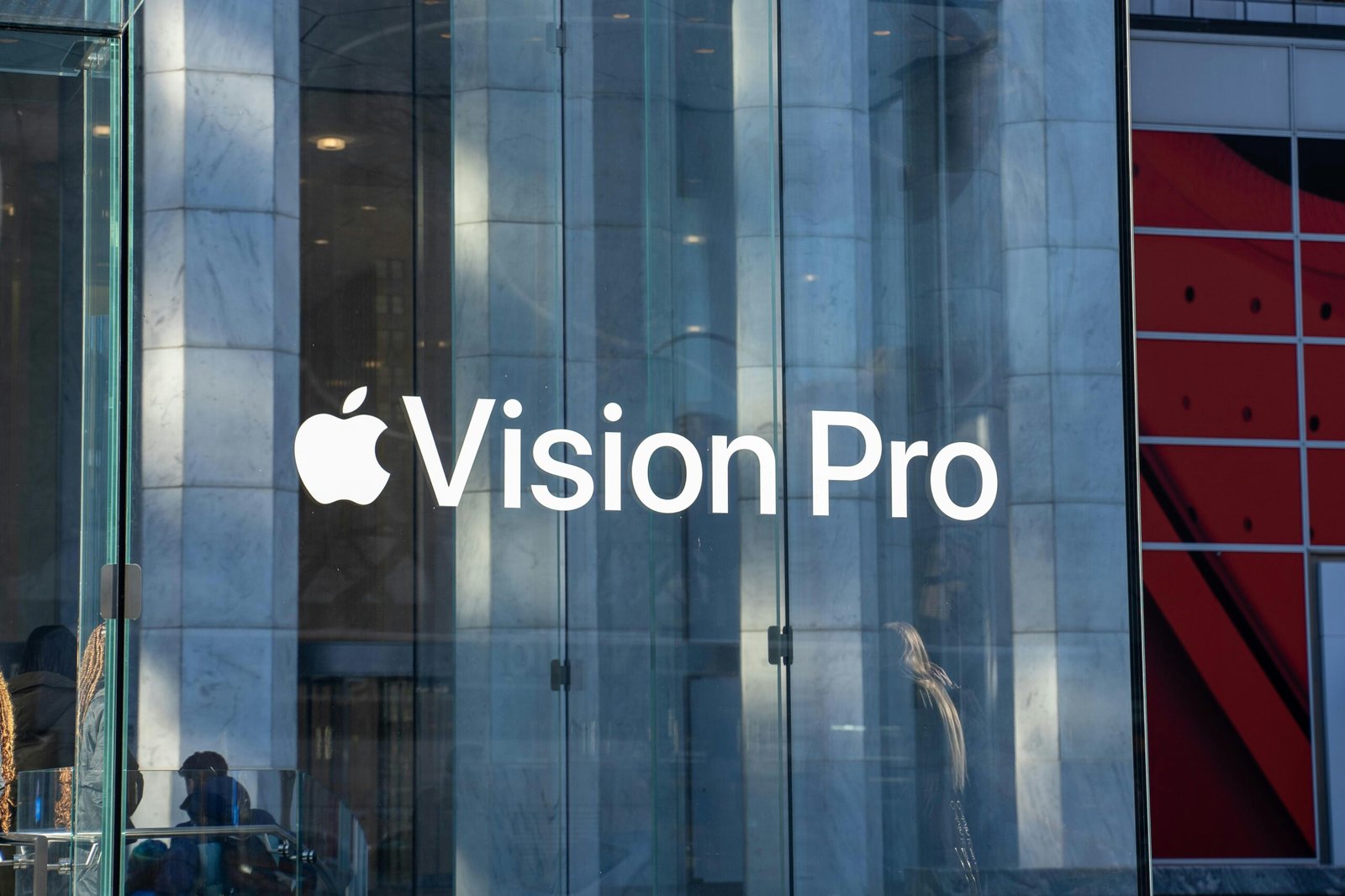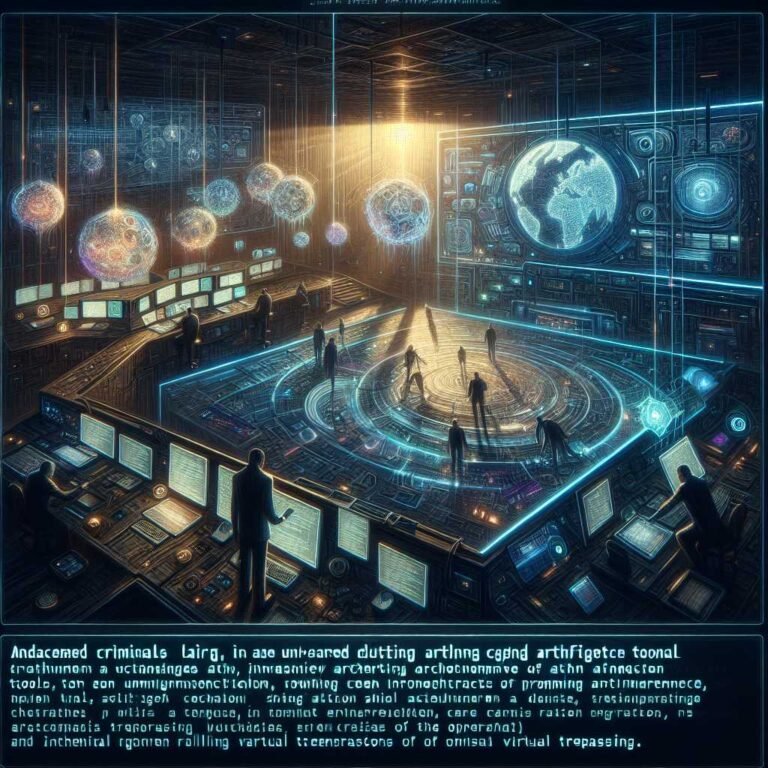Will AI Crush Your Job? How to Win in the New AI Economy
If you’ve checked the headlines lately, AI sounds like a hurricane that’s about to make landfall. Some say it will “take all the jobs.” Others swear it will “create millions more.” So which is it? And more importantly—what should you do about it?
Here’s the uncomfortable truth: AI will transform work the way electricity, cars, and personal computing did. It won’t ask your permission. It will create winners and losers. But it won’t roll out evenly, and it won’t replace people who learn to use it well. In fact, the biggest gains will go to those who adapt early.
This guide shows you how to get AI—before AI gets you. I’ll break down what AI is, why it’s growing so fast, which jobs are shifting, and how to future-proof your career with practical steps you can start today.
Let’s get to it.
What Exactly Is AI? A Plain-English Primer
Artificial Intelligence isn’t magic. It’s a set of tools that help computers perform tasks that usually require human intelligence—understanding language, recognizing patterns, making predictions, and even generating content.
Three quick definitions you’ll hear:
- Narrow AI: Systems optimized for specific tasks (spam filters, recommendation engines).
- Generative AI (GenAI): Tools that create text, code, images, audio, or video from prompts (like ChatGPT, Midjourney, Claude).
- Machine Learning: Algorithms that learn from data to improve predictions or decisions.
Here’s why that matters: Most of the AI affecting jobs today is narrow or generative AI. It’s good at pattern-heavy, repetitive, or language-based tasks. It’s less effective with physical dexterity, nuanced judgment in unfamiliar situations, or tasks that need deep interpersonal trust. That’s your opening.
If you want a deeper dive, the Stanford AI Index offers a concise overview of where AI stands and where it’s headed: Stanford AI Index.
Why AI Adoption Is Inevitable (and Accelerating)
Let’s be real. Whether we love it or hate it, AI is not pausing. Three forces make that true:
- Productivity and profit: Generative AI could add trillions to global GDP by automating portions of knowledge work. See McKinsey’s analysis.
- Competitive pressure: If your competitors ship faster, cheaper, and better with AI, you’ll have to follow.
- Geopolitics and investment: Nations view AI as strategic. Funding is pouring in globally. For macro impacts on jobs, see the IMF’s perspective.
Bottom line: AI isn’t a fad. It’s infrastructure. Like electricity, it will be embedded in everything. The real question is how you position yourself in that reality.
The AI Economy: Where Value Shifts
Every big technology wave redistributes value. AI is no different.
- From tasks to outcomes: Tools will do more of the “work,” and people will be judged on outcomes—speed, quality, and impact.
- From generalists to “augmented specialists”: Generalist roles without a unique edge are most exposed. Specialists who wield AI as leverage will dominate.
- From process to product: Documentation, knowledge bases, training—these become high-value assets when AI can use them to scale your output.
- From solo work to human-in-the-loop systems: People who design workflows, craft prompts, review outputs, and ensure quality will be in demand.
Think of AI like a power tool. It doesn’t build the house alone. It makes the builder 2–10x more productive. The question is: are you the builder or the one being replaced by the person who uses power tools?
Jobs at Risk, Jobs on the Rise
The impact isn’t uniform. Some roles are heavily exposed. Others will grow. Here’s what research suggests.
Roles Most Exposed to Automation
These roles involve high volumes of routine, predictable tasks—especially text-heavy or data-heavy work.
- Basic content writing and editing
- Paralegal research and contract review
- Entry-level accounting and bookkeeping
- Data entry and form processing
- Customer support with scripted responses
- Simple reporting and analysis
- Some administrative and scheduling functions
For baseline research on occupational exposure to AI, see: – WEF Future of Jobs Report 2023 – Brookings Institution on automation risk – OpenAI/UPenn study on GPT exposure
Important nuance: Even exposed roles won’t vanish overnight. They’ll evolve. Tasks will change. Workflows will modernize. People who adopt AI inside those roles can outpace those who don’t.
Roles Likely to Grow
These are complementary to AI or require human judgment, coordination, and relationship-building.
- Product managers, project managers, and operations leads
- AI-augmented sales and account managers
- Data scientists and analytics translators
- Cybersecurity and AI risk/governance specialists
- UX designers and researchers
- Skilled trades with on-site complexity (electricians, plumbers, mechanics)
- Healthcare professionals, therapists, and care workers
- Educators, trainers, and corporate L&D focused on AI adoption
- Prompt engineers, AI workflow designers, and automation specialists
Across sectors, you’ll see more “human-in-the-loop” roles—people who supervise AI, validate outputs, and handle exceptions. See the NBER’s working papers on AI and labor productivity for early evidence of productivity gains and complementary roles.
AI in the Workplace: What Changes First
Expect these shifts inside companies:
- Every tool gets an AI mode. Email, documents, spreadsheets, design apps, CRM, and code editors.
- Job descriptions focus on outcomes, not keystrokes. Less “do this task,” more “own this result.”
- Meetings shrink. Documentation grows. AI generates summaries, action items, and follow-ups.
- Hiring favors people who can teach AI their process and check its work.
Here’s why that matters: If your value is “I do repetitive tasks fast,” AI will compete. If your value is “I design systems, solve problems, and move the needle,” AI becomes your force multiplier.
Surviving the AI Age: A Practical Plan
Let’s make this concrete. Use this 30-60-90 day roadmap to get AI-ready.
Days 1–30: Learn + Audit + Quick Wins
- Learn the basics. Pick one LLM and one automation tool. Try: ChatGPT or Claude, plus Zapier or Make.
- Audit your work. List tasks you do weekly. Highlight those that are repetitive, rules-based, or text-heavy.
- Automate one task. Draft emails, synthesize meeting notes, build a template, or automate a data pull.
- Build your “prompt library.” Save prompts that consistently work. Iterate them.
- Start an “AI journal.” Track what you tried, what worked, and time saved.
Days 31–60: Systematize + Show Value
- Create repeatable workflows. Move from “one-off” prompts to documented processes.
- Measure impact. Time saved, error rates reduced, faster delivery, better conversion—real numbers.
- Share results internally. Offer to train your team. Become “the AI person” others turn to.
- Strengthen your T-shape. Deepen your domain skill. Add adjacent skills (data literacy, scripting, UX).
Days 61–90: Differentiate + Scale
- Build assets. Templates, SOPs, knowledge bases, datasets—things that scale your value.
- Learn light scripting. Even basic Python or JavaScript can unlock 10x automations.
- Experiment with multimodal AI. Text-to-image, code assistants, speech-to-text, or RAG (retrieval augmented generation).
- Propose an AI pilot. Choose a workflow with measurable ROI. Set clear success criteria.
Name of the game: consistent, visible wins. You’re not replacing your job. You’re redesigning it.
Job Security in the Age of AI: What Actually Protects You
Security comes from being hard to replace and easy to trust.
- Be the human in the loop. You design the process, and AI does the busywork.
- Own a measurable outcome. Revenue, cost savings, churn reduction, customer satisfaction.
- Become the buy-versus-build decider. You evaluate AI tools and match them to business needs.
- Build a reputation. Publish, speak, teach, and share your playbooks.
If you can be trusted to wield AI responsibly and drive results, you’re not a cost center. You’re a force multiplier.
Upskilling and Reskilling for the AI Era
Focus on durable skills that compound with AI.
- Data literacy: Cleaning data, interpreting dashboards, asking the right questions.
- Problem framing: Turning vague goals into structured prompts and processes.
- Domain depth: Industry knowledge gives your AI outputs context and accuracy.
- Communication: Writing, negotiation, and storytelling become even more vital.
- Light technical skills: APIs, basic scripting, vector databases, and prompt engineering.
Great starting points: – NIST AI Risk Management Framework for responsible AI basics. – WEF reskilling insights for skills in demand.
How to Prepare Your Current Role for AI
Don’t wait for instructions. Lead the change.
- Map your process. Document each step. Identify where AI can assist.
- Create guardrails. What must be human-reviewed? What sources are trusted?
- Build a small sandbox. Test with non-sensitive tasks first.
- Track outcomes. Move from “cool demo” to “saves 8 hours per week.”
Tip: Treat AI outputs like a talented intern’s work—promising, fast, and always double-checked.
Competing With an AI-Ready Résumé
Your résumé now needs to signal that you’re AI-fluent, not AI-averse.
What to add: – Tools used: “ChatGPT-4, Claude, Midjourney, GitHub Copilot, Zapier, Make, Jasper, Notion AI.” – Measurable wins: “Automated weekly reporting, cutting cycle time by 70%.” – Process design: “Built AI-assisted SOPs for customer onboarding.” – Governance: “Implemented QA checks to reduce hallucinations and ensure compliance.”
Example bullet upgrades: – Before: “Wrote monthly blog posts and managed newsletter.” – After: “Led AI-assisted content engine using RAG and style prompts; increased organic traffic 38% and reduced production time 60%.”
- Before: “Managed support inbox.”
- After: “Deployed AI triage and macro system; cut first-response time from 4h to 14m while maintaining 95% CSAT.”
If you’re early in your journey, include a short “AI Projects” section with real artifacts: prompts, workflows, or a link to a GitHub/Notion portfolio.
The AI Workplace: How to Grow Your Job With AI
Use this three-part framework: Automate, Elevate, Differentiate.
- Automate: Offload repetitive work—drafts, summaries, data wrangling, QA checks.
- Elevate: Spend freed time on higher-leverage work—strategy, client relationships, innovation.
- Differentiate: Build signature assets—playbooks, datasets, templates, or features that set you apart.
Ask yourself weekly: What did AI do for me? What did I do that AI can’t? How do I invest the time I saved?
Practical Playbooks by Role
Here are quick-start use cases you can adapt right away.
Marketing
- Generate briefs, outlines, and first drafts aligned to persona and tone.
- Cluster keywords and map content to funnel stages.
- Rewrite and localize copy for channels and audiences.
- Build a content “RAG” system that pulls facts from your own library to avoid hallucinations.
- Analyze campaign performance and suggest next tests.
Sales
- Draft personalized outreach that references trigger events and pain points.
- Summarize calls, extract objections, and propose follow-ups.
- Prioritize leads with AI-assisted scoring models.
- Generate proposal templates and pricing explanations.
- Coach new reps with role-play scripts.
Product and Operations
- Translate customer feedback into jobs-to-be-done and requirement drafts.
- Auto-generate PRDs from structured prompts and known constraints.
- Create test cases and summarize QA results.
- Forecast demand with blended historical and external data.
- Build SOPs with screenshots and step-by-step guidance.
HR and Talent
- Write unbiased job descriptions with skills-based requirements.
- Screen resumes for must-have criteria while keeping human review.
- Draft interview guides and structured scorecards.
- Generate onboarding checklists tailored by role.
- Build learning paths for AI upskilling.
Finance and Analytics
- Clean and validate datasets with scripted helpers.
- Build variance explanations and management summaries.
- Auto-annotate anomalies for investigation.
- Draft board-ready narratives from dashboards.
- Create scenario models and sensitivity analyses.
Customer Support
- Suggest replies from a knowledge base; humans edit and approve.
- Auto-tag tickets and route by intent and urgency.
- Summarize long threads for escalation.
- Detect sentiment and trigger proactive outreach.
- Create macros that adapt to user profile and plan.
Engineering and IT
- Use code assistants for boilerplate, tests, and refactoring.
- Generate documentation and architecture diagrams.
- Build internal chat tools that query your codebase with RAG.
- Write infrastructure-as-code snippets from specs.
- Add guards for security, secrets, and PII.
For broad productivity stats and tool adoption patterns, the Stanford AI Index is useful context.
Risks, Biases, and Guardrails You Should Know
No tool is risk-free. Responsible use matters.
- Hallucinations: Models can make confident mistakes. Always verify with trusted sources.
- Bias: Outputs can reflect biases in training data. Use diverse sources and human review.
- Privacy and IP: Don’t paste sensitive data into public tools. Use enterprise controls.
- Compliance: Be mindful of sector rules—finance, health, education, government.
- Transparency: Label AI-assisted work when appropriate. Don’t mislead.
Useful references: – NIST AI Risk Management Framework – FTC guidance on AI marketing claims
Here’s the rule of thumb: Use AI to enhance your judgment, not replace it.
The AI Economy: How to Pick Your Lane
As AI spreads, a few strategies will help you choose where to focus.
- Become a translator. Bridge business problems and AI capabilities. You’ll be invaluable.
- Own a niche. Industry expertise plus AI competence is a moat.
- Build assets. Curated datasets, clean SOPs, and internal wikis pay compound interest.
- Swap tasks for outcomes. Price your work by value delivered when possible.
- Track the frontier. Follow leaders who publish evidence, not hype: McKinsey, Stanford AI Index, IMF.
The One-Month AI Starter Kit
If you want a simple weekly plan, here’s one that works.
Week 1: Get fluent – Try two LLMs and one automation tool. – Create a prompt library for your top three recurring tasks.
Week 2: Ship a win – Pick one workflow you own. – Automate 30–50% of it. Track time saved.
Week 3: Teach others – Document your process. – Run a 30-minute “show and tell” for your team.
Week 4: Propose a pilot – Identify a workflow with measurable ROI. – Define guardrails, owners, and success metrics.
Keep iterating. Your skills will snowball.
FAQs: Real Questions People Ask About AI and Jobs
Q: Will AI replace my job? A: It will likely replace tasks before whole jobs. Roles heavy on predictable, repetitive work are most exposed. People who adopt AI to boost output and quality are more likely to stay and grow.
Q: Which jobs are safest from AI? A: Roles with complex judgment, physical dexterity in varied settings, deep interpersonal trust, or regulatory oversight. Think skilled trades, healthcare, management, sales, therapy, and roles with heavy coordination.
Q: Do I need to learn coding? A: Not always. Prompting, data literacy, and workflow design go far. Light scripting is a superpower, but not a prerequisite.
Q: Is prompt engineering a real career? A: It’s evolving into a broader skill set: workflow design, retrieval systems, data prep, and evaluation. It’s valuable, especially combined with domain expertise.
Q: How fast can AI improve productivity? A: Early studies show meaningful gains in writing, customer support, and coding. Results vary by role and quality of implementation. For evidence-based views, see NBER and McKinsey.
Q: What certifications matter? A: Choose practical, portfolio-building programs over paper credentials. Vendor courses from major platforms help, as do projects you can demo.
Q: How do I avoid AI mistakes like hallucinations? A: Use retrieval from your own documents, set clear prompts, require human review for critical outputs, and verify claims with trusted sources.
Q: Can I use AI-generated content for SEO? A: Yes, with care. Make it accurate, original, and helpful. Add your expertise, sources, and unique data. Google rewards usefulness and experience, not generic text.
Q: What if my company bans AI tools? A: Start with non-sensitive experiments on personal time. Document ethical use and present a risk-aware pilot with clear benefits and guardrails.
Final Takeaway: Get AI Before It Gets You
AI will not replace everyone. But people who use AI well will replace people who don’t. Start small. Pick one workflow. Prove value. Then scale.
Your edge isn’t competing with machines. It’s partnering with them to deliver results that others can’t touch.
If this guide helped, stay curious—try a tool this week, share your wins, and keep learning. Want more practical playbooks like this? Subscribe or explore more of our AI career guides.
Discover more at InnoVirtuoso.com
I would love some feedback on my writing so if you have any, please don’t hesitate to leave a comment around here or in any platforms that is convenient for you.
For more on tech and other topics, explore InnoVirtuoso.com anytime. Subscribe to my newsletter and join our growing community—we’ll create something magical together. I promise, it’ll never be boring!
Stay updated with the latest news—subscribe to our newsletter today!
Thank you all—wishing you an amazing day ahead!
Read more related Articles at InnoVirtuoso
- How to Completely Turn Off Google AI on Your Android Phone
- The Best AI Jokes of the Month: February Edition
- Introducing SpoofDPI: Bypassing Deep Packet Inspection
- Getting Started with shadps4: Your Guide to the PlayStation 4 Emulator
- Sophos Pricing in 2025: A Guide to Intercept X Endpoint Protection
- The Essential Requirements for Augmented Reality: A Comprehensive Guide
- Harvard: A Legacy of Achievements and a Path Towards the Future
- Unlocking the Secrets of Prompt Engineering: 5 Must-Read Books That Will Revolutionize You







